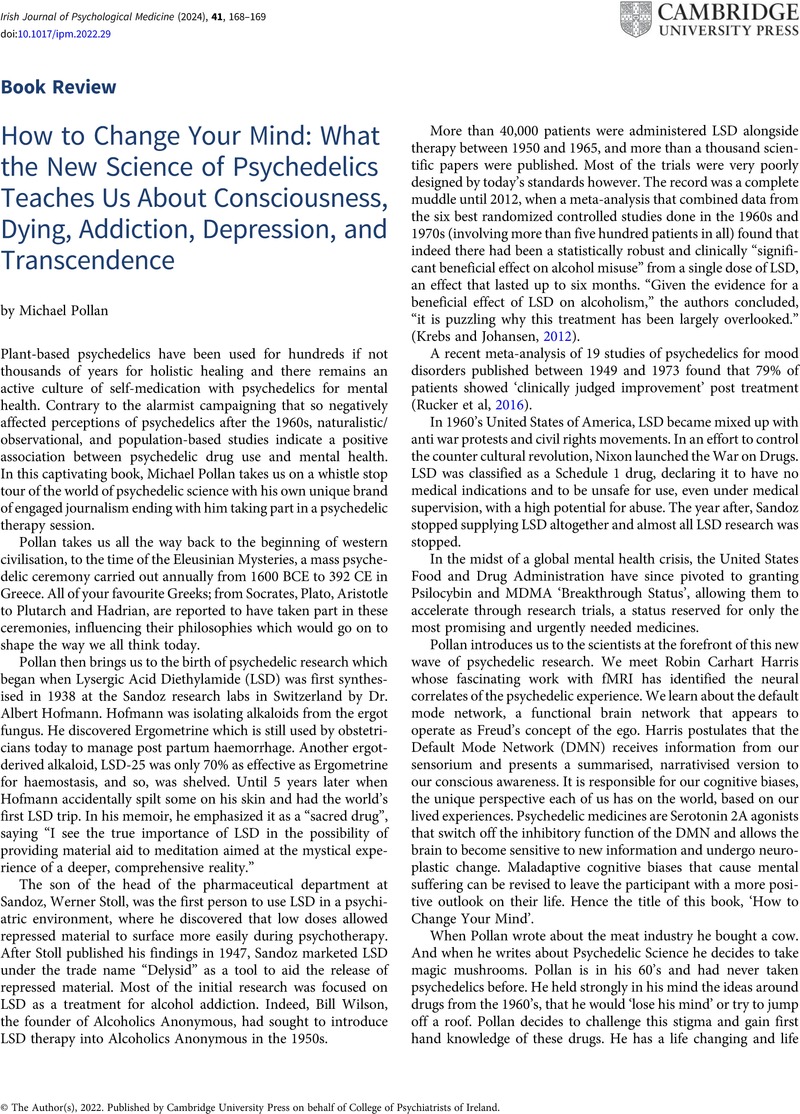Crossref Citations
This article has been cited by the following publications. This list is generated based on data provided by Crossref.
Slechten, F.
and
De Hert, M.
2022.
Klassieke psychedelica als behandeling voor depressie: waar staan we vandaag?.
Tijdschrift voor Geneeskunde,



